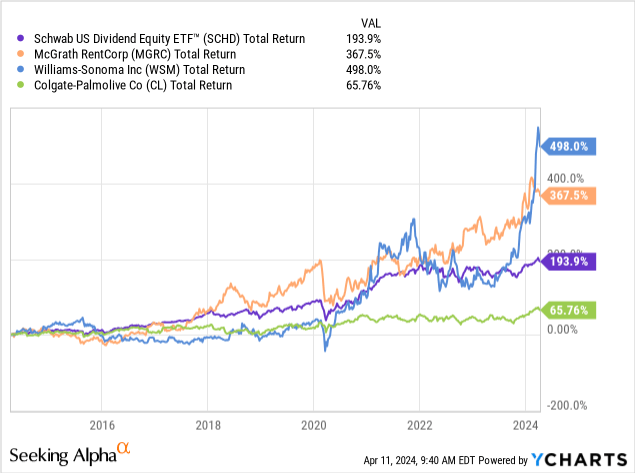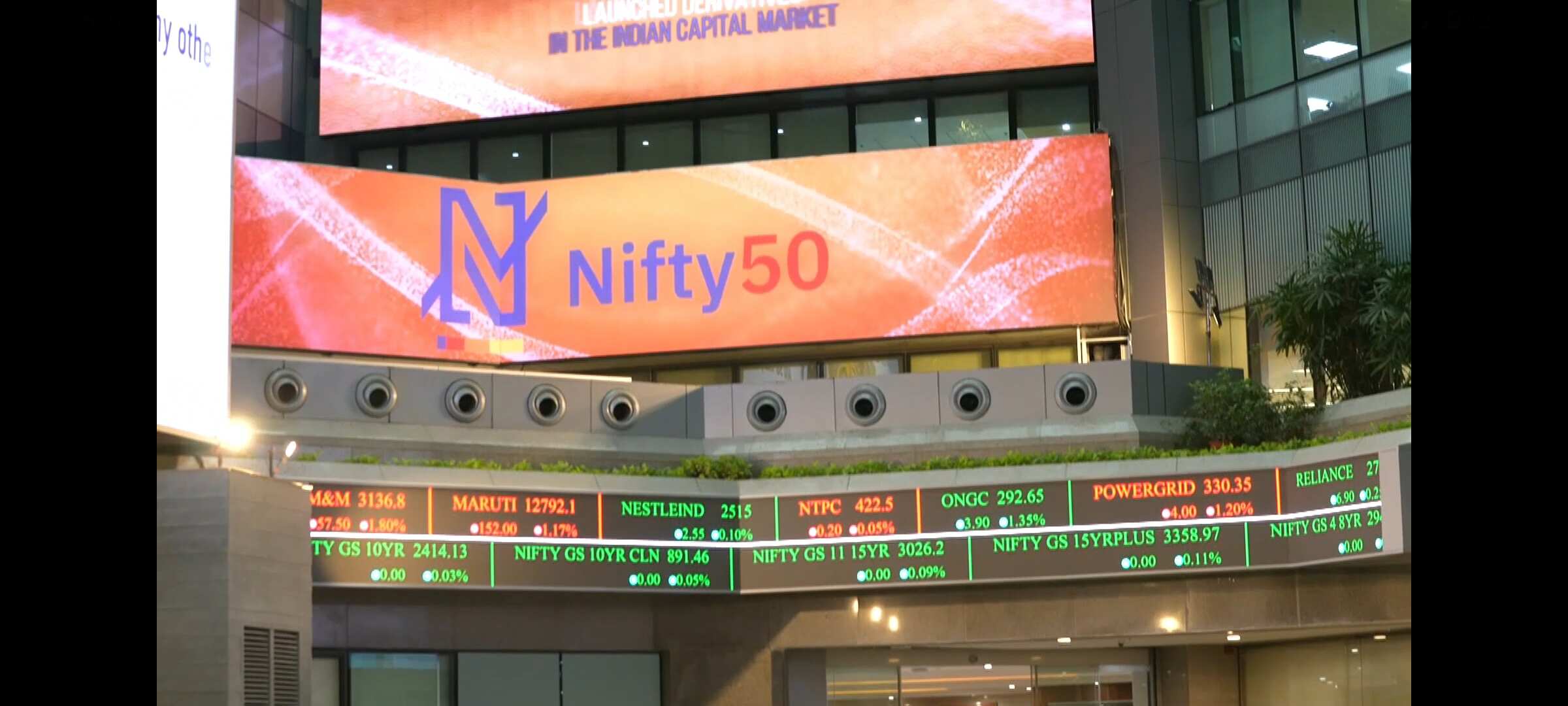Richard Drury
This week, we have three six new dividend increases, including dividend king Colgate-Palmolive! They extend their 61-year streak with a 4.2% increase. The average increase is 10.6%, with a median of 4.2%.
As an investor who follows a dividend-growth strategy, I am always excited to receive dividend payouts, especially when they increase. I have noticed that companies that increase their dividends regularly perform significantly better than those that don’t. Therefore, I keep a close eye on such companies and can confidently share my insights on upcoming dividend increases. I have compiled a list of top stocks that are expected to increase dividends in the upcoming week. You can use this list to construct your portfolio and make timely purchases with certainty.
How I Created The Lists
The following information is a result of merging two sources of data: the “U.S. Dividend Champions” spreadsheet from a particular website and upcoming dividend data from NASDAQ. This process combines data on companies with a consistent dividend growth history with future dividend payments. It’s important to understand that all companies included in this list have consistently grown their dividends for at least five years.
Companies must have higher total yearly dividends to be included in this list. Therefore, a company may not increase its dividend every calendar year, but the total annual dividend can still grow.
What Is The Ex-Dividend Date?
The ex-dividend date is the last day you can purchase shares to qualify for an upcoming dividend or distribution. To be eligible, you must have bought the shares by the end of the preceding business day. For instance, if the ex-dividend date is Tuesday, you must have acquired the shares by the market close on Monday. If the ex-dividend date falls on a Monday (or a Tuesday following a holiday on Monday), you must have purchased the shares by the previous Friday.
Dividend Streak Categories
Here are the definitions of the streak categories, as I’ll use them throughout the piece.
- King: 50+ years.
- Champion/Aristocrat: 25+ years.
- Contender: 10-24 years.
- Challenger: 5+ years.
| Category | Count |
| King | 1 |
| Champion | 1 |
| Contender | 1 |
| Challenger | 0 |
The Dividend Increases List
Data was sorted by the ex-dividend date (ascending) and then by the streak (descending):
| Name | Ticker | Streak | Forward Yield | Ex-Div Date | Increase Percent | Streak Category |
| McGrath RentCorp | (MGRC) | 32 | 1.61 | 15-Apr-24 | 2.15% | Champion |
| Williams-Sonoma, Inc. Common Stock | (WSM) | 18 | 1.54 | 18-Apr-24 | 25.56% | Contender |
| Colgate-Palmolive Company | (CL) | 61 | 2.31 | 19-Apr-24 | 4.17% | King |
Field Definitions
Streak: Years of dividend growth history are sourced from the U.S. Dividend Champions spreadsheet.
Forward Yield: The payout rate is calculated by dividing the new payout rate by the current share price.
Ex-Dividend Date: This is the date you need to own the stock.
Increase Percent: The percent increase.
Streak Category: This is the company’s overall dividend history classification.
Show Me The Money
Here’s a table mapping the new rates versus the old rates. It also reiterates the percentage increase. This table is sorted similarly to the first (ex-dividend day ascending, dividend streak descending).
| Ticker | Old Rate | New Rate | Increase Percent |
| MGRC | 0.465 | 0.475 | 2.15% |
| WSM | 0.9 | 1.13 | 25.56% |
| CL | 0.48 | 0.5 | 4.17% |
Additional Metrics
Some different metrics related to these companies include yearly pricing action and the P/E ratio. The table is sorted the same way as the table above.
| Ticker | Current Price | 52 Week Low | 52 Week High | PE Ratio | % Off Low | % Off High |
| MGRC | 117.97 | 83.63 | 130.86 | 16.47 | 41% Off Low | 10% Off High |
| WSM | 293.07 | 107.61 | 319.78 | 15.65 | 172% Off Low | 8% Off High |
| CL | 86.56 | 66.78 | 90.37 | 27.27 | 30% Off Low | 4% Off High |
Tickers By Yield And Growth Rates
I’ve arranged the table in descending order so investors can prioritize the current yield. As a bonus, the table also features some historical dividend growth rates. Moreover, I have incorporated the “Chowder Rule,” which is the sum of the current yield and the five-year dividend growth rate.
| Ticker | Yield | 1 Yr DG | 3 Yr DG | 5 Yr DG | 10 Yr DG | Chowder Rule |
| CL | 2.31 | 2.1 | 3 | 2.7 | 3.5 | 5 |
| MGRC | 1.61 | 2.2 | 3.5 | 6.5 | 6.8 | 8.1 |
| WSM | 1.54 | 15.4 | 21.3 | 15.9 | 11.3 | 17.4 |
Historical Returns
My investment strategy is centered on identifying stocks with a consistent track record of outperforming the market while increasing their dividend payouts. I have employed the Schwab U.S. Dividend Equity ETF (SCHD) as a benchmark to compare the performance of individual stocks. SCHD has a long history of exceptional performance, a higher yield than the S&P 500, and a proven record of growing dividends. I prefer investing in the ETF if a stock cannot outperform the benchmark. I have included several companies in my personal investment portfolio based on this analysis. Furthermore, I rely on this analysis to make timely additional purchases for my portfolio.
The ten-year dividend growth rate is one of the four main factors in the index behind SCHD. It’s also a proxy for success, although it’s not a perfect predictor. Share prices tend to follow strong dividend growth over long periods. Here’s a comparison of SCHD and everyone on the list.

The performance of SCHD over the past decade generated a total return of 194%. However, the performance of individual stocks within the portfolio varies widely.
WSM was the best performer with a return of 498%, but most of it was achieved during the COVID-19 pandemic. Before 2020, WSM underperformed SCHD by a significant margin.
On the other hand, MGRC secured the second position with a fantastic total return of 368%. Their performance generally surpassed that of CHD over most of the time frame. This is less surprising than WSM’s performance, in my opinion.
Lastly, CL had a rather disappointing performance, with a mere total return of 66% over a decade. This is not good, even for a dividend king.
Please do your due diligence before making any investment decision.
















